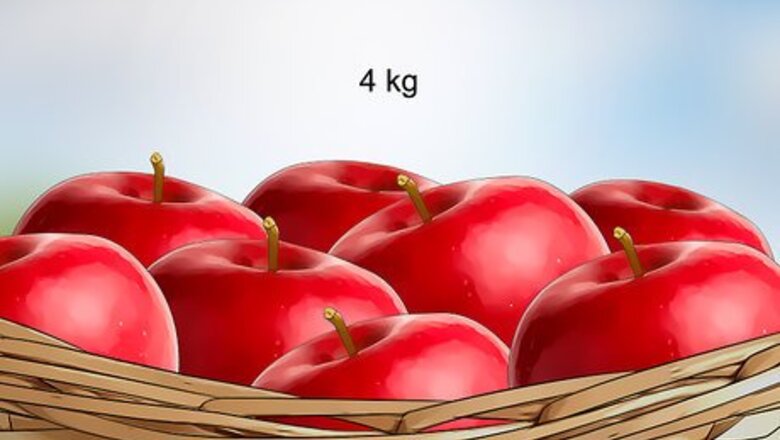
views
Picking and Cubing Your Apples

Purchase or pick 4 kilograms (8.8 lb) of apples. Don’t get just one type of apple! A medley of different apple variants creates a wine with blended tastes, textures, and smells. A mix of aromatic and acidic apples are commonly used to add depth to the wine. Some aromatic apples to consider are McIntosh, Golden, and Red Delicious. Popular acidic apples are Jonathan, Northern Spy, Winesap, Baldwin, and Granny Smith. Only use ripe apples. Unripe apples have a low sugar and high starch content which can interfere with the clarification process. Overly ripe apples are hard to clarify and process.

Wash the apples. Run them under cold water until the water running off of them is completely clear. The water helps remove dirt and chemical residue. Once they are washed, pat them dry.
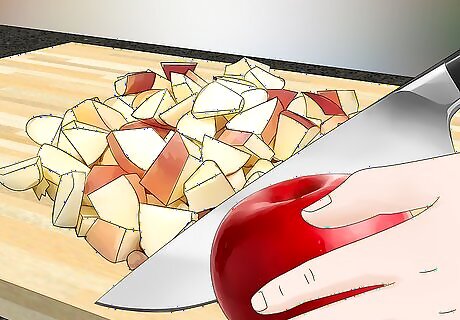
Slice the apples into cubes. Use a large, sharp kitchen knife. Start by vertically cutting the apple into sixths, removing the core from the center. Then, continue to slice the apple into smaller sections, until you are left will small cubes. Leave the apple skin intact! Removing it can impact the fermenting process. You can make the cubes any size you want. A common size is 0.5 inches (1.3 cm)
Fermenting the Wine
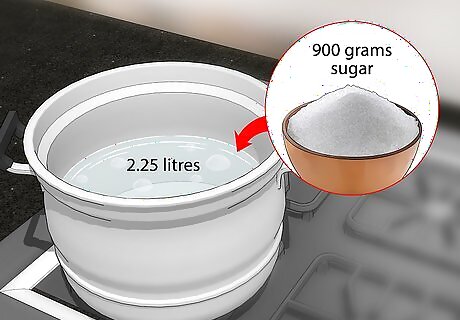
Boil 2.25 litres (0.59 US gal) of water and 900 grams (2.0 lb) of sugar. Use a pot that is big enough to hold 4.5 litres (1.2 US gal) of water and 4 kilograms (8.8 lb). Turn the heat on high to bring the water to a boil. Once the water starts to boil, let it simmer for a few minutes.
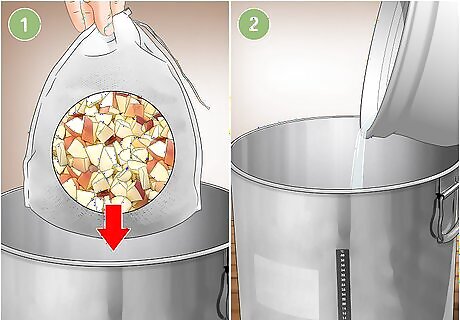
Add the apples and boiling water to your fermenter. First, put the chopped apples in a fine straining bag. Tie it tightly to help block extra sediment from getting in your wine. Place the bag at the bottom of the fermenter. Next, pour the 2.25 litres (0.59 US gal) of boiling water into the fermenter. Be careful with the boiling water! Use heat protection to make sure not to burn yourself. For a cheaper option, use a plastic bucket fermenter.

Pour 2.25 litres (0.59 US gal) of cold water into the fermenter. Use cold water to bring the boiling water down to a lukewarm temperature. Be careful when pouring so the boiling water doesn’t splash up on you.
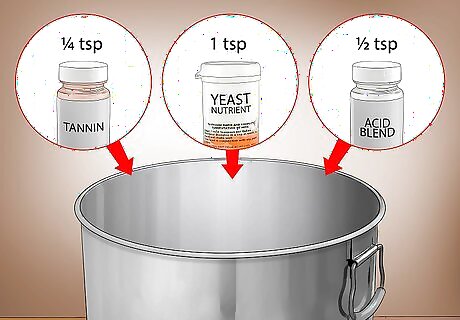
Stir in the tannin, yeast nutrient, and acid blend to the fermenter. Use 0.7 grams (¼ tsp) of tannin, 2.8 grams (1 tsp) of yeast nutrient, and 2.5 grams (½ tsp) of acid blend.. Once you’ve added the ingredients, take a large cooking spoon and stir thoroughly. Then, let the fermenter and its contents sit and cool for at least 2 hours. If you only used aromatic apples, you can add up to 5 grams (1 tsp) of acid blend. Leave the fermenter lid open. Doing so will speed up the cooling process.
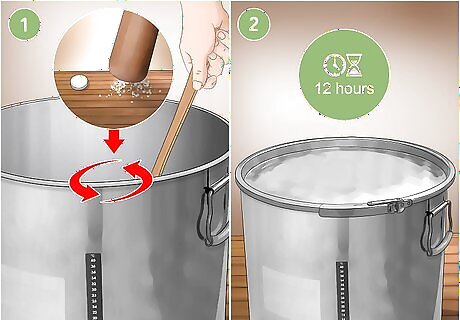
Add a crushed Campden tablet to the fermenter and wait 12 hours. Use a large cooking spoon to mix in the crushed Campden tablet with the must. Once you’ve finished stirring, cover the fermenter with its lid, letting it sit for at least 12 hours.
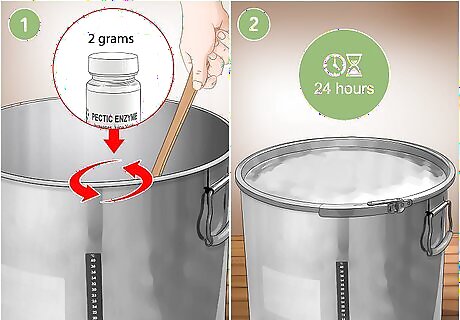
Add 2 grams (0.5 tsp) of pectic enzyme and wait 24 hours. After adding the enzyme to the fermenter and stirring the must completely, leave the fermenter covered to sit for 24 hours.

Sprinkle in a sachet of yeast to the fermenter and wait 24 hours. After you add the yeast, close the fermenter to shield the must from the air. Let the fermenter sit closed for 24 hours. During this time, the yeast will start to ferment the wine by converting the apples’ sugars into alcohol. Don’t stir the yeast. A common yeast sachet recommendation is Lalvin EC-1118.
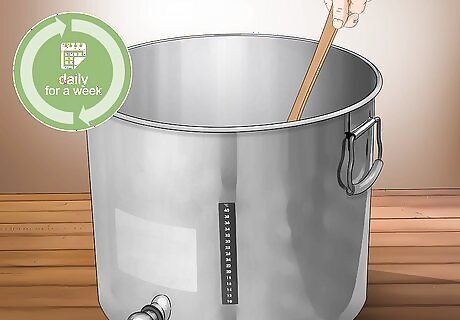
Stir the fermenter's contents daily for a week. Take a large cooking spoon and stir everything in the fermenter. Don’t forget to stir the apples at the bottom! Stirring everything daily helps break down the apples.
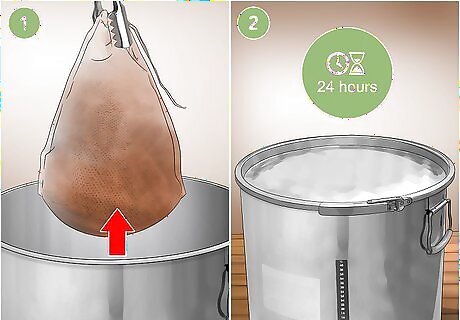
Remove the bag of apples from the fermenter. Use tongs or put on gloves to take out the apples. Once removed, let the bag of apples drip dry over the opening of the fermenter. Then, let the remaining contents settle in the fermenter for 24 hours. Tempting as it is, don’t squeeze the bag of apples over the fermenter!
Racking the Wine
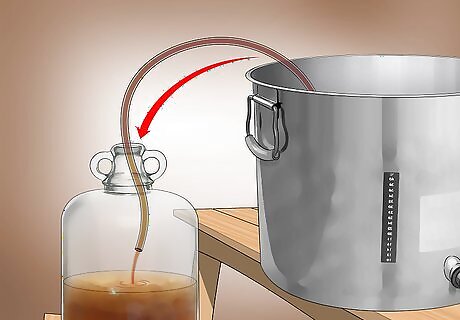
Siphon the wine into an air-tight demijohn. Fill the siphon tube with water and place one end halfway down into the fermenter. Place the other end of the siphon into the demijohn and release the flow of wine. This process is called racking. When the wine reaches the yeast layer at the bottom of the fermenter, remove the siphon. Sanitize your siphon before using it! Be careful not to pour out the water in the siphon tube! Keep the ends elevated and put one of your fingers on the end. To prevent air bubbles, pinch the tube. Make sure to place the demijohn at a lower height than the fermenter.
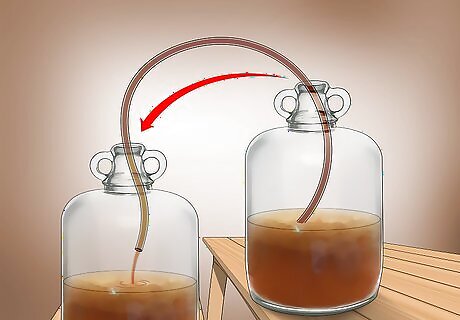
Rerack the wine by repeating the siphoning process. You can siphon the wine into another demijohn or back to the fermenter to siphon it back to the original demijohn. This should be done every few months to aid clearing.
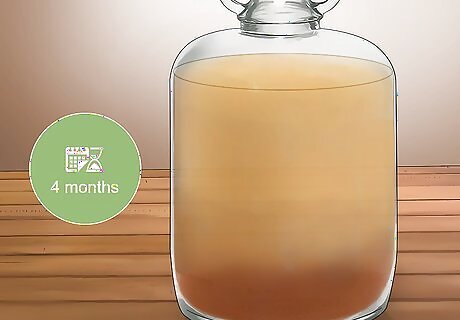
Let the wine condition for at least 4 months. To condition, it, just let the wine sit and age in the demijohn. The longer you condition the wine, the softer it will taste.
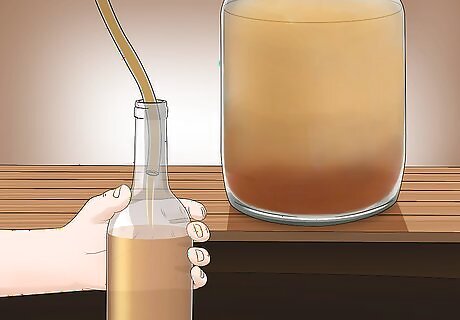
Siphon the wine into bottles. Place the sanitized wine bottles below the fermenter or demijohn. Once bottled, the wine is ready for you to drink or gift!




















Comments
0 comment